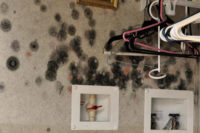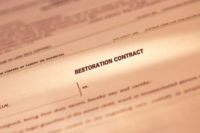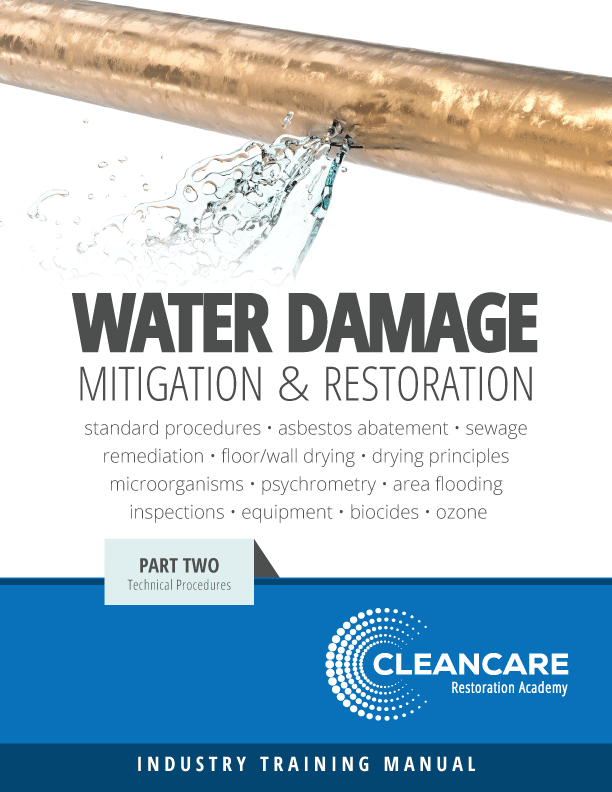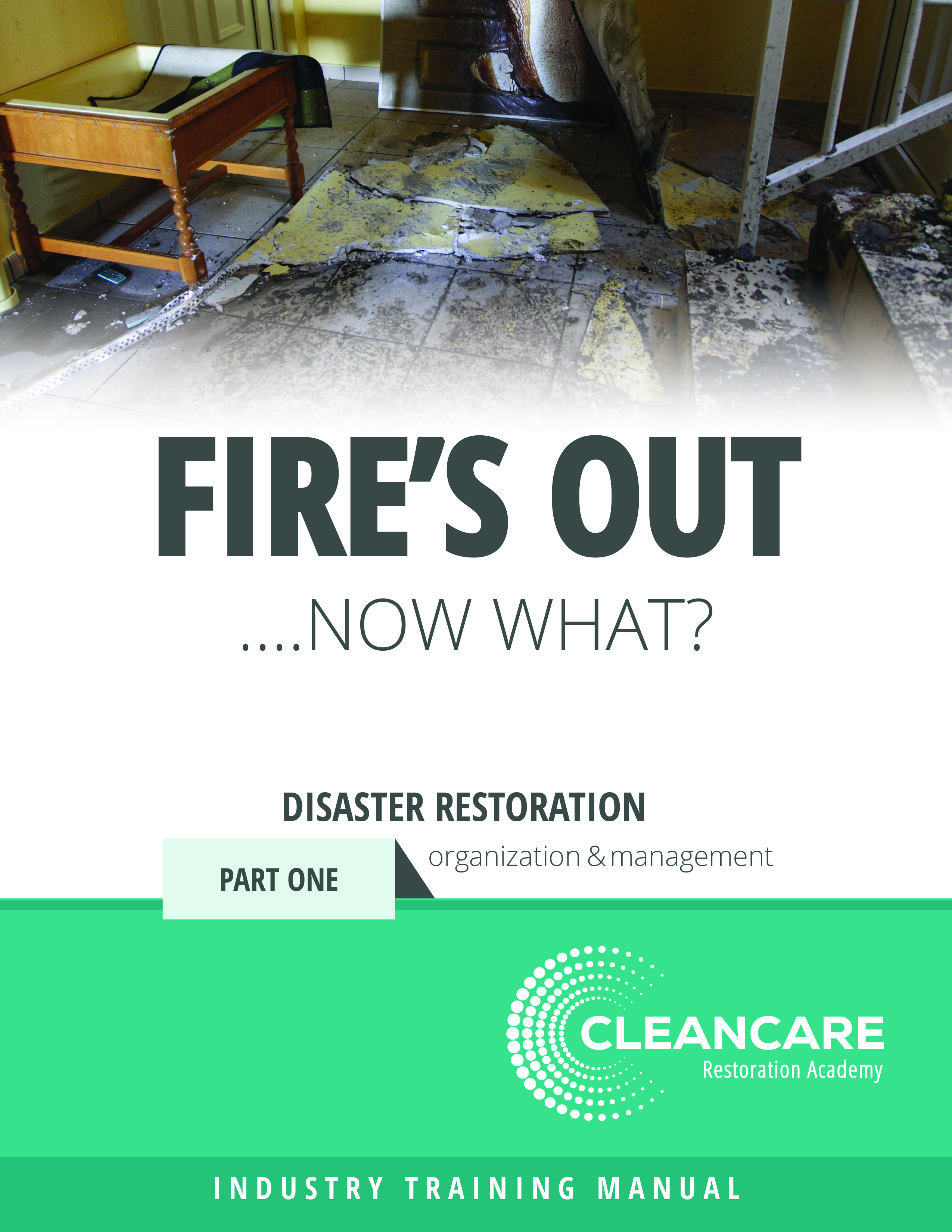Toxic Mold Litigation: 2013 Update (Part II)
Science is, oddly enough, not always an exact science. And science changes over time










In the August R&R, we looked at some big mold lawsuits and examined how mold claims are proven in court. In Part II, we’ll examine how a jury will react to mold claims in a court of law as well as how to handle such a situation if going to court is unavoidable.
Consider How a Jury Will React To This Evidence
Science is, oddly enough, not always an exact science. And science changes over time. The Earth was once flat, blood-letting was an effective medical treatment, and Pluto was a planet. Just as in most professions, those who work in mold remediation must stay abreast of the current state of the discipline.
The CDC reported that indoor mold exposure can be linked to upper respiratory problems (see www.cdc.gov.) Mold exposure can be linked to asthma symptoms in those people who have asthma or who have other hyper-sensitivities. The Institute of Medicine (IOM) also found that there was “limited” or “suggestive” evidence that indoor mold exposure is linked to respiratory illness in otherwise healthy children. Basically, more research needs to be done, but from our perspective as risk managers the main health issues to be concerned about are allergies and asthma.
The CDC says “toxic mold” is a misnomer and courts will often grant motions prohibiting witnesses from using the word “toxic” when they testify. Nonetheless, many molds produce toxins. However, the production can be very inconsistent. Proof of toxin production is extremely rare in mold litigation. So, as a general rule, the molds are considered potentially toxic, i.e., “toxigenic.” Some toxins are carcinogenic but this author is aware of no studies that have proven that indoor mold exposure has caused cancer in a human. However, the prudent restorer will refrain from giving medical advice.
Stachybotrys chartarum is much less common than other molds, but the CDC states it is “not rare.” It is most common in cellulose rich material such as gypsum board and wallpaper that has been subjected to moisture for extended periods.
In a publication released by the World Health Organization (WHO), studies were classified with regard to the strength of evidence they contained. One study with a higher evidence strength concluded that dampness in buildings seems to increase risks of health effects in the airways (like asthma), and the causal association is strong, but the mechanisms of illness are unknown. (WHO Guidelines for Indoor Air Quality, 2009.)
There is sufficient evidence of an association between mold and asthma development, respiratory infections, upper respiratory tract symptoms and certain hypersensitivities. Otherwise, there is no evidence sufficient to conclude a causal relationship between mold and any specific human health effect. In most jurisdictions, the proponent of scientific evidence of a health effect must prove causation to a “reasonable degree of medical certainty.” Many courts interpret this to mean “probability” rather than true certainty. It is relatively easy to find a physician, who, for $500 an hour will testify that the client of the lawyer who hired him probably had a health effect from mold. Whether he can withstand cross-examination is quite another story.
There is plenty of uncertainty surrounding toxic mold and the affect mold has on human health, all of which is good for defendants in mold cases. The relative risk for health problems is unknown. The mechanism of action of these health problems is unknown. The percentage of people who may be affected by the mold is unknown. The job of the effective defense team is to make the claim seem as uncertain and speculative as possible. The more unknowns there are, the less likely a judge is to allow evidence of a certain theory to go to a jury.
Be Proactive
Seeing or smelling mold can be a very disconcerting experience for a building owner. It is important to point out to customers that the proper diagnosis of medical conditions should not be confused with exaggerated attention to indoor air quality issues. When you get a call about suspected mold, the customer will most likely be genuinely concerned about his or her health, or the health of his or her family. There will probably be a sense of urgency on their part. Be empathetic. The customer has been through a trauma in his eyes and the last thing he needs is a condescending contractor telling him his problems are all in his head. Without admitting fault, assure the customer that you understand his concern and you will do your best to properly address the issue and protect the building from further intrusion. It’s also best to take swift action to help calm their fears and ensure the problem doesn’t get any worse.
So, what steps should you take? Keep in mind that spending some money up front may save you from spending much more money later on in litigation when you have an unhappy customer with an aggressive attorney.
- Engage the services of a qualified environmental professional;
- Consider the risks and benefits of disclosing the professional’s findings and recommendations to the owner; and
- Select certified and qualified personnel to execute the recommendations.
Sampling may create good evidence or bad evidence. Plaintiffs in illness cases are at a serious disadvantage without it. However, for ordinary maintenance and remediation purposes, many publications and institutions involved in public health issues suggest avoiding mold testing in many cases. This includes the California Department of Public Health, The Minnesota Department of Health, the United States Environmental Protection Agency, the Michigan Department of Community Health, and many more.
Your professionalism, proficiency and sincerity are all key to a successful resolution. They are more important than the amount of mold contamination, the species of mold or the workmanship of your staff.
Always remember to document and explain all the key events and circumstances, following the adage: “If it’s not in writing, it didn’t happen.” Maintain a copy of the environmental professional’s findings. Make it your goal to not only remediate the mold, but also to guide the owner and occupants through the process so they believe it has been resolved.
Knowledge is Power
A major part of the comfort that owners need is obtained through information. The fear that comes with finding mold in your home is partly due to false information surrounding mold and the effects mold can have on humans. Mold is everywhere. No amount of remediation will remove every spore from a customers’ home, and the remediation contract should indicate that it is not the goal of mold remediation to remove every spore but to bring the concentrations down to acceptable levels. The “clearance” criteria should be agreed upon before the contract is signed, and incorporated into the contract.
When Litigation Cannot Be Avoided
If a customer gives you the opportunity to discuss the matters before attorneys are involved, do so and keep an open mind. A little bit of work now to remediate a perceived problem is much easier to deal with than an unhappy customer filing a complicated and messy mold lawsuit.
There are times when a customer just cannot be satisfied. Lawsuits will be filed. Not all of them will be justifiable, and many of them will never reach a jury. However, just as the team you bring with to fight the mold is important, so is the team you build to help fight a lawsuit.
The defendant in a mold case needs experienced defense counsel with the technical proficiency and ability to understand the scientific issues of the case. The effective attorney will be gathering evidence from different members of the defense team and prepare to present it in a crisp and organized fashion.
The available “science” on mold has changed drastically over the years. For a while, “toxic mold” was the reason people were sick. It was believed to be the reason those infants tragically died in Cleveland, but then the deaths seemed to stop for no apparent reason.
People are constantly trying to understand mold in ways that it cannot be understood. In 2001, California passed the Toxic Mold Protection Act which mandated that the California Department of Public Health (CDPH) determine the feasibility of setting Permissible Exposure Limits (PELs) for indoor mold. In 2005, the CDPH reported back that it was not, in fact, feasible. Certainly that was something the IICRC already knew.
The CDPH released a Statement on Building Dampness, Mold, and Health in September 2011. In that Statement, the Department concluded that water damage, dampness, visible mold and mold odor in buildings is unhealthy. Hopefully they didn’t spend millions just to arrive at that conclusion. While acknowledging the inability to determine PELs, the Department nonetheless is clear in its belief that building dampness can cause various health problems. The CDPH associates dampness with the development of asthma, allergies, and respiratory infections, wheeze, cough, difficulty breathing, and other symptoms. Children may be more sensitive than adults.
The CDPH, along with other public health organizations and publications, does not believe that “toxic mold” is any great indicator of possible health risks. Evidence that has been linked to health problems are current and past water damage, damp materials, visible mold, and mold odor - not what type of mold is present. The CDPH recommends not wasting time measuring or identifying the particular mold in the home or building, and just jumping in to remediate the problem. This was reiterated in July 2012 in the Indoor Air Quality Info Sheet produced by the CDPH.
Avoid knee-jerk reactions to scientific “facts.” Assumptions are made constantly in areas where scientific evidence may or may not exist. Defense counsel sometimes try to make the analogy that mold-related illness theories are like the “myth” that being cold will ensure that you actually catch a cold. Actually, when you’re cold, your body needs to work extra hard to regulate your body temperature. When you’re working hard to regulate body temperature, you don’t always have the energy required to fight off germs that are constantly bombarding you. Therefore, being cold can in fact make you sick.
Perhaps mold could act the same.
Looking for a reprint of this article?
From high-res PDFs to custom plaques, order your copy today!













